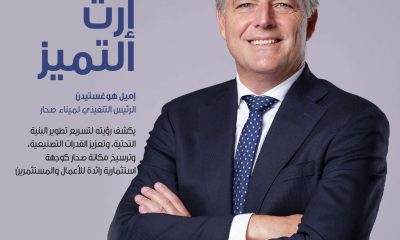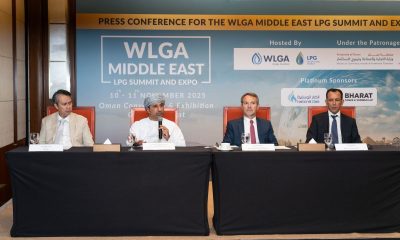Progress Oman
On a sound footing
Despite a fall in oil prices, banks in Oman have not seen any contraction in demand for credit in the first quarter of 2015

The Sultanate’s Islamic banks and window operations are gaining prominence with a strong growth in finance, deposits, branch network and product offerings. Most of the Sharia-compliant institutions and window operations are expected to achieve break-even this year, thanks to growing popularity of Islamic products among local customers. Islamic banks and window operations have achieved a robust 107 per cent growth in finance for the first four months of 2015 at RO1,265.8 million, over RO611.1 million for the same period last year. This indicates that Sharia-compliant financial institutions are in a much better position to deploy their funds in a profitable manner now, which was a major hurdle faced by these institutions in their inception.
All-round growth
Likewise, deposits of Islamic financial institutions surged ahead by 195 per cent to RO847.3 million for the four-month period ending April 2015, from merely RO287.7 million for the same period last year. In fact, growth of Islamic finance was slow but steady since its inception in the country and this year is likely to see most of the Islamic banks and windows achieving break-even, merely within three years of starting operations. Growing public awareness will lead to further growth in the coming years. Two Islamic banks and windows operations of conventional banks are competing among themselves in launching attractive products and opened several branches to cater to the needs of customers, especially in interior regions. Though still small compared to conventional finance, Islamic finance has created its niche space globally. Its transactions, being largely participation-based, appeal not only to faith-based investors but also to conservative risk-takers shunning high levels of leveraging. In Oman, Islamic institutions constitute 6.7 per cent of combined finance, while deposits constitute 4.6 per cent of total deposits of the banking system.
With strong economic growth projections fuelled by government expenditure on infrastructure projects and a young, Sharia-sensitive population, Oman has all the ingredients required for a successful Islamic finance sector in the near future. A high-powered national-level Sharia board was recently formed by the Central Bank of Oman in line with its long-term objective of developing a vibrant Islamic banking sector. The formation of a national Sharia board is for regulating Islamic banks and window operations of conventional banks. Islamic banks and window operations of conventional banks are also governed by Sharia boards of individual Islamic institutions. The national Sharia board is a supervisory board, which advises the Central Bank of Oman on the issues concerning Sharia compliant products. The financial sector in Oman requires new Islamic financial instruments, which will help Sharia-compliant institutions to deploy their excess liquidity in a productive manner within the country. Although few institutions have floated Islamic financial instruments, there is a severe dearth of both short-term and long-term instruments. The financial system needs both short-term and long-term instruments as a viable inter-bank market and an Islamic capital market could boost the profitability of Oman’s Islamic banks. The Islamic banks have so far mainly relied on wakala, which are Sharia-compliant agency agreements, to manage their short-term funding needs.
Sovereign sukuk
However, with Oman government’s plan to float a sovereign sukuk gathering momentum, Islamic finance industry will see an interesting period this year. Oman government could mobilise a lot of excess liquidity in the market for developing several infrastructure projects, which are now financed by way of government funding. An overwhelming response to a recent power company’s public offer (which mobilised bids worth RO1 billion against a share offer of RO56.3 million) is a clear indication of ample liquidity and investible funds with potential investors.
Further, a sovereign sukuk issue will definitely give the much-needed confidence among the potential sukuk issuers to raise fund for their development projects.
Financial institutions like Bank Muscat have already drawn up mega plans for raising funds by way of sukuk issues. The bank last year said it planned to raise RO500 million by way of sukuk programmes in various tranches from within the country and outside. The sukuk tranches will be of different amounts, currencies, maturities, profit rates issued on different dates and with varying terms and conditions of subscription. Majority state-owned Oman Telecommunications Company (Omantel) plans to raise RO50 million by way of a sukuk issue, which is in an advanced stage of finalisation.
External impact
Although bankers in Oman are confident of a double-digit growth in demand for credit this year, an international rating agency said that a slump in oil prices could affect the country’s banking system, like other oil dependent Gulf states. The impact could be either direct through exposure to banks and deposits from oil or government-related companies or indirectly through lower investments and economic growth, which may weigh on asset quality of banks and profitability indicators, according to Standard & Poor’s Ratings Services. Banks in Bahrain and Oman are vulnerable indirectly through the potential drop in investments and economic growth. On a positive note, the agency said both countries would benefit from disbursements from the GCC Development Fund, which provides $10 billion to each country over a 10-year period, which would offset any capital expenditure cuts and act as a key growth contributor.
There was a significant drop in oil prices over the past few months, reaching around $65 per barrel for Brent crude by mid-June compared to more than $100 per barrel a year ago. In particular, the ratings agency said, the banking systems of countries with low fiscal buffers, significant economic imbalances, and high dependence on oil-related bank deposits may come under pressure. Standard & Poor’s said that in most of the oil exporting countries, it looked at government spending and investment projects remaining among the main generators of economic growth and opportunities for the banking system. That is particularly true for Gulf states, where government investments account for a large share of total investments. Standard & Poor’s estimated that low oil prices will result in a fall in government revenues and exports, and will hamper the liquidity of the banking system. Banks in Qatar, Oman, and the UAE display significant concentration in their funding profiles, with around 30 per cent to 40 per cent of deposits coming from government and its related entities.
However, banks in Oman did not face any contraction in demand for credit, which is evident from the first quarter performance of 2015. Seven conventional banks in the country have posted a robust 10.6 per cent growth in net loans and advances at RO17.52 billion for the first four months of 2015, from RO15.84 billion for the same period of last year. It is more or less in line with last year’s credit growth – the total bank credit grew 11.3 per cent to RO16.90 billion by the end of 2014 from RO15.18 billion for the same period of 2013. Banks expect the demand for credit from corporate sector to improve further in the second half. In an attempt to retain their market share in a competitive environment, local banks have been focusing on low cost deposits, strengthening their capital base, emphasis on recovering bad and doubtful debts and additional revenue from window operations of Islamic banking products.
Conventional banks in Oman are also trying to enhance capital by way of rights issue and bonds, which include the euro-medium term note (EMTN). National Bank of Oman (NBO) has decided to increase its euro-medium term note issue to $1.5 billion, from an earlier size of $600 million. The bank plans to issue Basel III-compliant tier 2 instruments within the proposed EMTN programme. BankDhofar also raised perpetual bonds worth $300 million from overseas markets.
-

 Alamaliktistaad Magazines2 months ago
Alamaliktistaad Magazines2 months agoAlam Al Iktisaad – September 2025 Edition
-

 Magazines2 months ago
Magazines2 months agoOER – September 2025 Issue
-

 News2 months ago
News2 months agoKitchenomiKs Secures Investment of US$3.2M Led by Jasoor Ventures
-

 News2 months ago
News2 months agoOman Inaugurates ‘Hadatha’ – Its All-New Cybersecurity Center
-

 Banking & Finance2 months ago
Banking & Finance2 months agoOman Arab Bank Highlights Its Ongoing Strategic Initiatives and Future Plans
-

 News2 months ago
News2 months agoIEA Expects Global Oil Market to Remain Oversupplied in 2026
-

 Energy2 months ago
Energy2 months agoWLGA Middle East LPG Summit & Expo 2025 to be held at OCEC on November 10 and 11
-

 Real Estate2 months ago
Real Estate2 months agoAl Mouj Muscat Unveils Azura Beach Residences Phase 2: A New Chapter in Waterfront Living































You must be logged in to post a comment Login